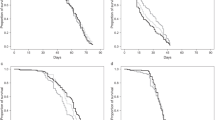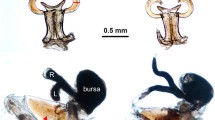Abstract
Fitness in self-incompatible simultaneous hermaphrodites incorporates gains and costs from both male and female reproductive function, and evolutionarily stable allocation of gonadal tissue to male or female function depends on these gains and costs. Paradoxically, despite the often equal expected gains but different costs associated with each sex, contributions to expected reproductive success through male and female function must be identical. Whenever allocation costs are unequal and limiting resources are energetically expensive or risky to acquire, these costs must ultimately be paid through reduced survival, resolving the paradox by equally diminishing expected reproductive success as male and as female. Maximizing fitness as lifetime reproductive success – not just reproductive rate alone, as in previous studies – maximizes the product of expected survival time and reproductive rate. The analysis shows how male-biased allocation can thereby arise and generate novel predictions on the relation between intensity of sperm competition and allocation to male function.





Similar content being viewed by others
References
Angeloni L, Bradbury JW, Charnov EL (2002) Body size and sex allocation in simultaneously hermaphroditic animals. Behav Ecol 13:419–426
Anthes N, Putz A, Michiels NK (2005) Gender trading in a hermaphrodite. Curr Biol 15:R792–R793
Anthes N, Putz A, Michiels NK (2006) Sex role preferences, gender conflict and sperm trading in simultaneous hermaphrodites: a new framework. Anim Behav 72:1–12
Arnqvist G, Rowe L (2005) Sexual conflict. Princeton Univ. Press, Princeton, NJ
Baeza JA (2007) Sex allocation in a simultaneously hermaphroditic marine shrimp. Evolution 61:2360–2373
Charnov EL (1980) Sex allocation and local mate competition in barnacles. Mar Biol Lett 1:269–272
Charnov EL (1982) The theory of sex allocation. Princeton Univ. Press, Princeton, NJ
Charnov EL (1996) Sperm competition and sex allocation in simultaneous hermaphrodites. Evol Ecol 10:457–462
Charnov EL, Maynard Smith J, Bull JJ (1976) Why be an hermaphrodite? Nature 263:125–126
Fischer EA (1981) Sexual allocation in a simultaneously hermaphroditic coral reef fish. Am Nat 117:64–82
Fischer EA (1984) Egg trading in the chalk bass, Serranus tortugarum, a simultaneous hermaphrodite. Z Tierpsychol 66:143–151
Fischer EA, Petersen CW (1987) The evolution of sexual patterns in the seabasses. BioScience 37:482–489
Fisher RA (1930) The genetical theory of natural selection. Clarendon, Oxford
Ghiselin MT (1969) The evolution of hermaphroditism among animals. Q Rev Biol 44:189–208
Greeff JM, Michiels NK (1999a) Sperm digestion and reciprocal sperm transfer can drive hermaphrodite sex allocation to equality. Am Nat 153:421–430
Greeff JM, Michiels NK (1999b) Low potential for sexual selection in simultaneously hermaphroditic animals. Proc R Soc Lond B Biol Sci 266:1671–1676
Greeff JM, Parker GA (2000) Spermicide by females: what should males do? Proc R Soc Lond B Biol Sci 267:1759–1763
Koene JM, Ter Maat A (2005) Sex role alternation in the simultaneous hermaphroditic pond snail Lymnaea stagnalis is determined by the availability of seminal fluid. Anim Behav 69:845–850
Leonard JL (1993) Sexual conflict in simultaneous hermaphrodites: evidence from serranid fishes. Environ Biol Fishes 36:135–148
Leonard JL (2005) Bateman’s principle and simultaneous hermaphrodites: a paradox. Integr Comp Biol 45:856–873
Leonard JL, Lukowiak K (1984) Male-female conflict in a simultaneous hermaphrodite resolved by sperm trading. Am Nat 124:282–286
Leonard JL, Lukowiak K (1985) Courtship, copulation and sperm trading in the sea slug, Navanax inermis (Opisthobranchia: Cephalaspidea). Can J Zool 63:2719–2729
Leonard JL, Lukowiak K (1991) Sex and the simultaneous hermaphrodite: testing models of male-female conflict in a sea slug, Navanax inermis (Opisthobranchia). Anim Behav 41:255–266
Marconato A, Shapiro DY (1996) Sperm allocation, sperm production and fertilization rates in the bucktooth parrotfish. Anim Behav 52:971–980
Michiels NK (1998) Mating conflicts and sperm competition in simultaneous hermaphrodites. In: Birkhead TR, Møller AP (eds) Sperm competition and sexual selection. Academic, London, pp 219–255
Michiels NK, Koene JM (2006) Sexual selection favors harmful mating in hermaphrodites more than in gonochorists. Integr Comp Biol 46:473–480
Michiels NK, Newman LJ (1998) Sex and violence in hermaphrodites. Nature 391:647
Morgan MT (1994) Models of sexual selection in hermaphrodites, especially plants. Am Nat 144:S100–S125
Pen I, Weissing FJ (1999) Sperm competition in simultaneous hermaphrodites: a new look at Charnov’s invariance principle. Evol Ecol Res 1:517–525
Petersen CW (1990) Variation in reproductive success and gonadal allocation in the simultaneous hermaphrodite, Serranus fasciatus. Oecologia 83:62–67
Petersen CW, Fischer EA (1996) Intraspecific variation in sex allocation in a simultaneous hermaphrodite: The effect of individual size. Evolution 50:636–645
Petersen CW, Warner RR (2002) The ecological context of reproductive behavior. In: Sale PF (ed) Coral reef fishes. Academic, San Diego, pp 103–118
Roff DA (2002) Life history evolution. Sinauer, Sunderland, MA, USA
Schärer L, Ladurner P, Rieger RM (2004) Bigger testes do work more: experimental evidence that testis size reflects testicular cell proliferation activity in the marine invertebrate, the free-living flatworm Macrostomum sp. Behav Ecol Sociobiol 56:420–425
Schärer L, Robertson DR (1999) Sperm and milt characteristics and male v. female gametic investment in the Caribbean reef fish, Thalassoma bifasciatum. J Fish Biol 55:329–343
Sella G (1985) Reciprocal egg trading and brood care in a hermaphroditic polychaete worm. Anim Behav 33:938–944
Sella G, Ramella L (1999) Sexual conflict and mating systems in the Dorvilleid genus Ophryotrocha and the Dinophilid genus Dinophilus. Hydrobiologia 402:203–213
Stearns SC (1992) The evolution of life histories. Oxford Univ. Press, Oxford, UK
Warner RR (1998) The role of extreme iteroparity and risk-avoidance in the evolution of mating systems. J Fish Biol 53(suppl A):82–93
Wedell N, Gage MJG, Parker GA (2002) Sperm competition, male prudence and sperm-limited females. Trends Ecol Evol 17:313–320
Williams GC (1975) Sex and evolution. Princeton Univ. Press, Princeton, NJ, USA
Acknowledgments
I thank Brent Palmer, Dave Westneat, and especially Mary Hart and Nico Michiels for helpful comments and suggestions on the manuscript and for stimulating discussions about simultaneous hermaphroditism and sexual conflict.
Author information
Authors and Affiliations
Corresponding author
Rights and permissions
About this article
Cite this article
Crowley, P.H. Sex allocation in simultaneous hermaphrodites: Trade-offs between sex-specific costs and lifespan. Theor Ecol 1, 199–208 (2008). https://doi.org/10.1007/s12080-008-0020-6
Received:
Accepted:
Published:
Issue Date:
DOI: https://doi.org/10.1007/s12080-008-0020-6




